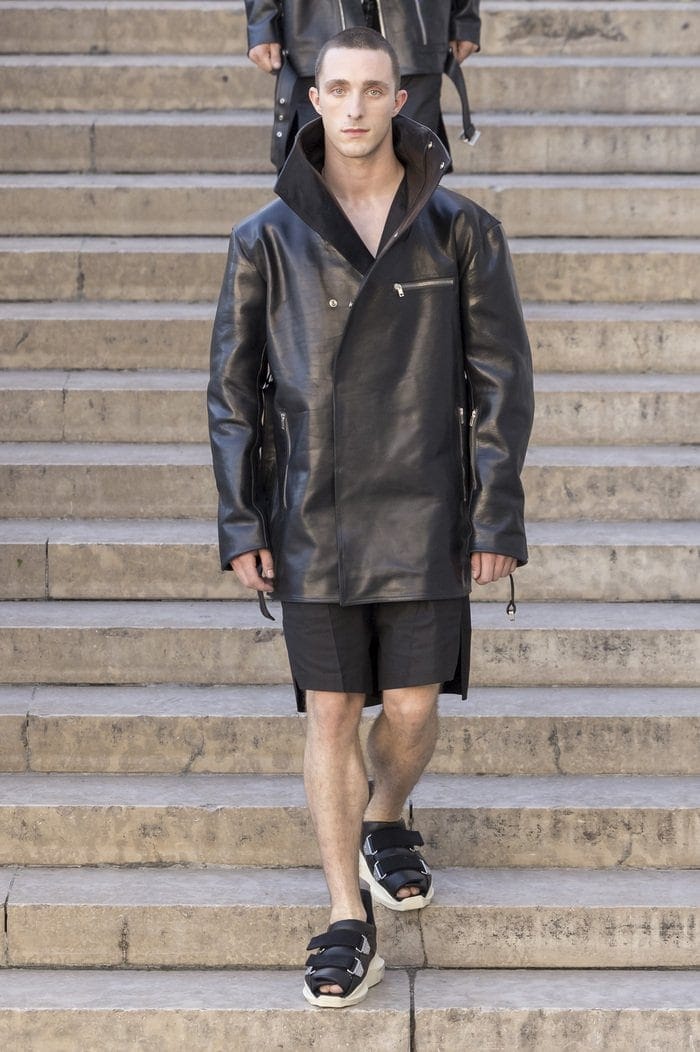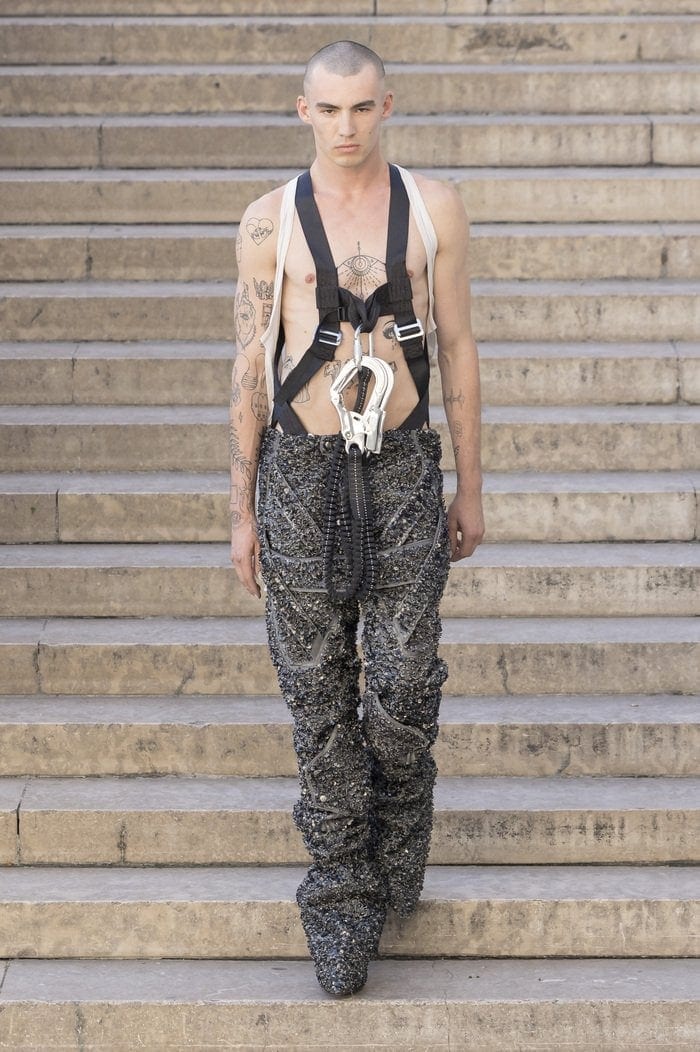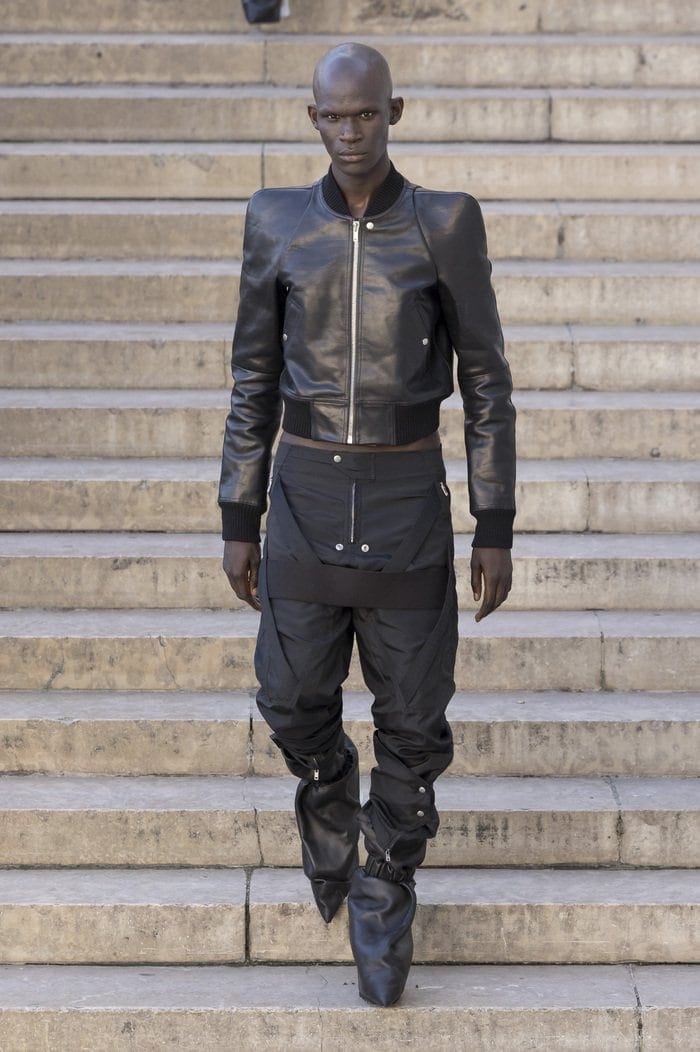Legacy in Low Volume
Review of Rick Owens Spring 2026 Men’s Fashion Show
By Mackenzie Richard Zuckerman
Staged in a solemn procession outside the Musée Palais Galliera—where his retrospective Temple of Love opened moments later—Rick Owens’ Spring 2026 men’s show felt like a quiet homecoming. With Klaus Nomi’s operatic Dido’s Lament drifting through the air and the Parisian light casting soft shadows on the stark façade, there was a reverent hush to the atmosphere, as though we were gathered not just for a show, but for a reckoning. It was fashion as ritual: pared back, considered, and hauntingly beautiful.
And for a designer known for towering silhouettes and brutalist drama, the restraint was striking. This wasn’t Owens at his loudest—but perhaps at his most poignant. Temple marked a shift inward, trading theatricality for tenderness, and spectacle for space.
In a culture defined by immediacy and overstimulation, Owens made the radical choice to slow down and ask for our attention—not with shock, but with stillness.
THE COLLECTION
THE VIBE
Reflective Restraint & Gritty Softness
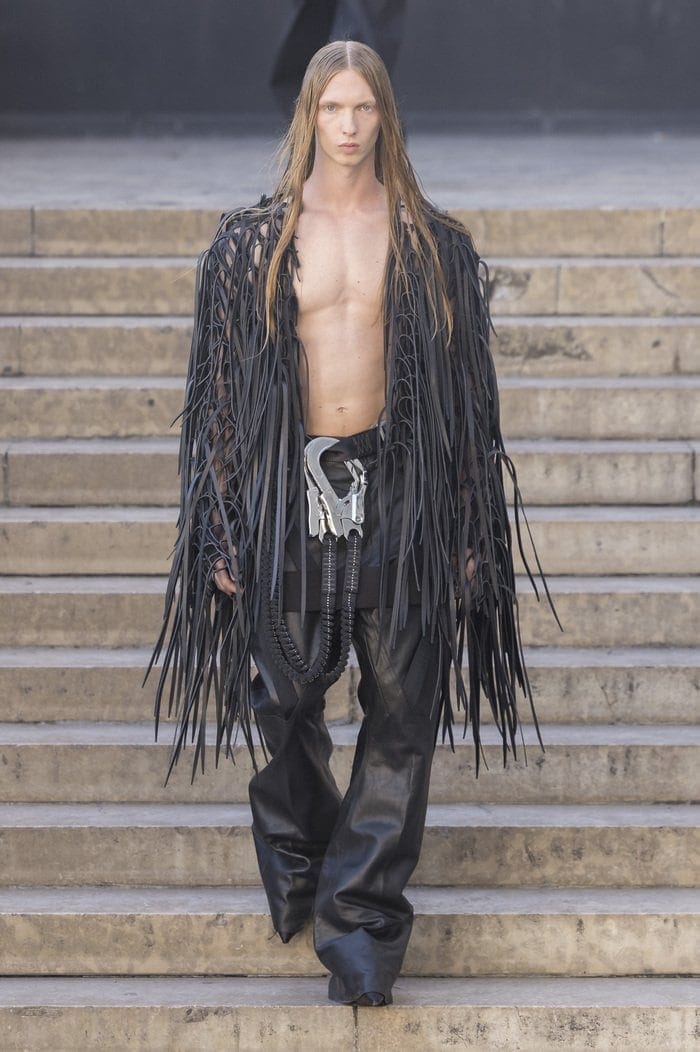
Titled Temple—a nod to the retrospective across the street—the collection wrestled with legacy, longing, and the seductive melancholy of looking back. But Owens didn’t deliver a greatest hits package. Instead, he layered nostalgia with rebellion, crafting a collection that acknowledged the fear of peaking while refusing to surrender to finality.
If the retrospective was the archive, Temple was the aftermath: quieter, rawer, and more emotionally charged.
Straps—one of Owens’ enduring motifs—draped across the body like garlands from Bouguereau’s sylvan nymphs, suggesting both ornament and restraint. Heavy leathers, fringed and slashed, whispered of punk rituals and sacred armor. The tension between fragility and force was everywhere: in open-toed orthopedic “burrito” sneakers, in silk taffeta parkas and GRS-certified nylon canvas, in the measured glimpses of skin framed by black gaps of leather. “Gritty Softness” might best describe the paradox at play—where beauty emerges through resistance and wear.
What made Temple particularly resonant, though, was its subtextual defiance.
In a hyper-visual culture obsessed with consumption and speed, Owens countered with deliberate pacing, emotional restraint, and the rejection of dopamine-driven design. The show wasn’t just about fashion—it was about what it means to create in a world that’s too busy watching to see. This was Owens at his most intimate and subversive, turning inward not as retreat, but as protest.
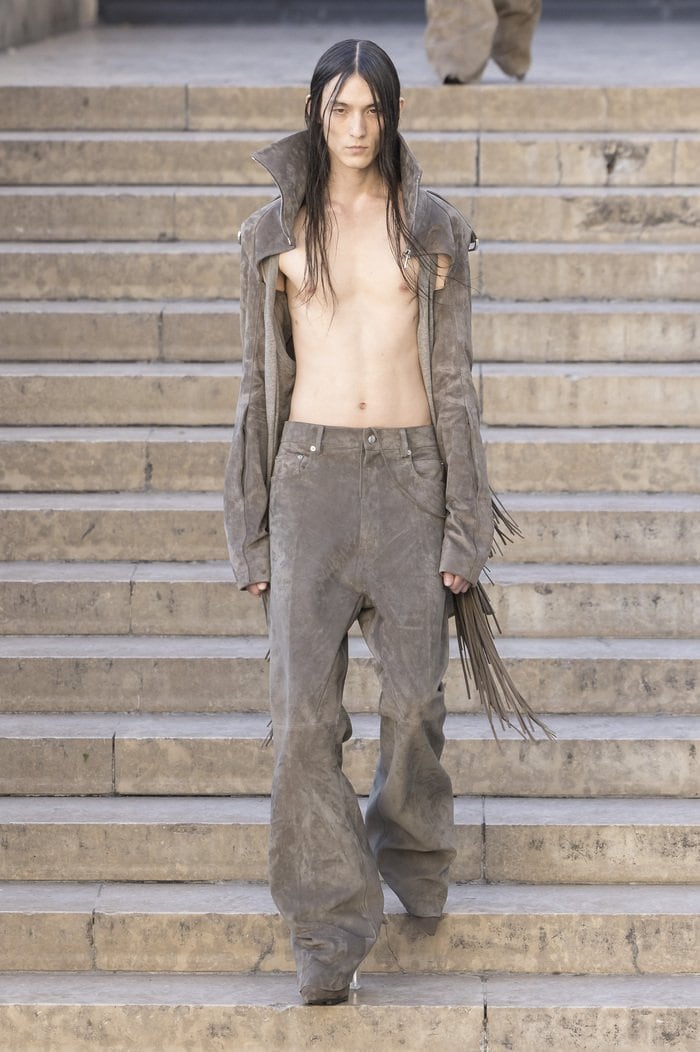
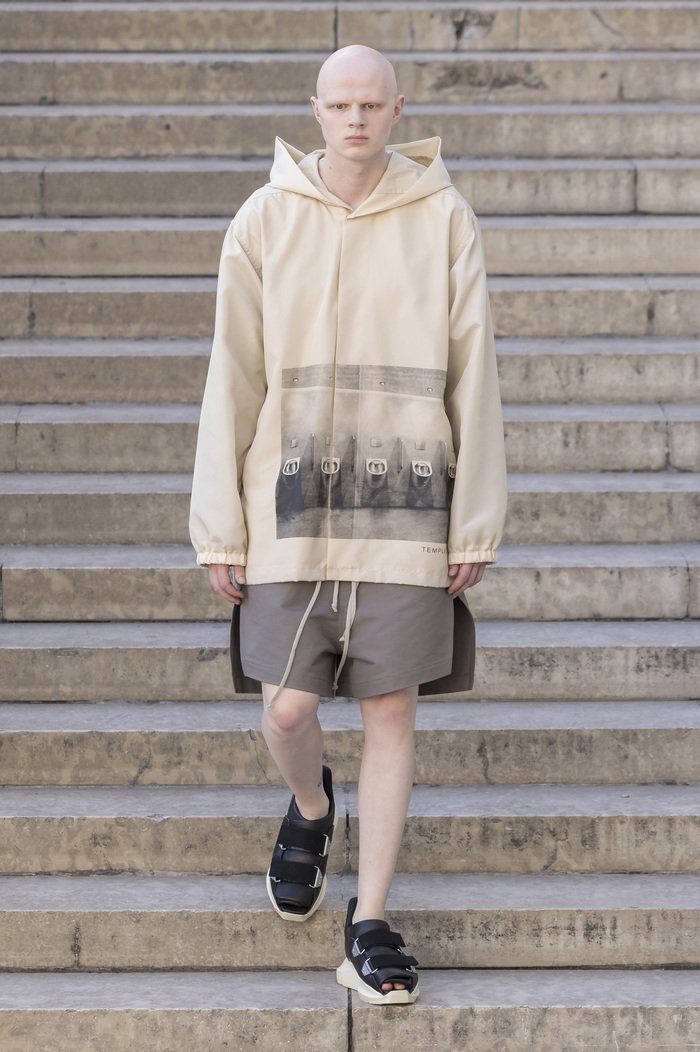
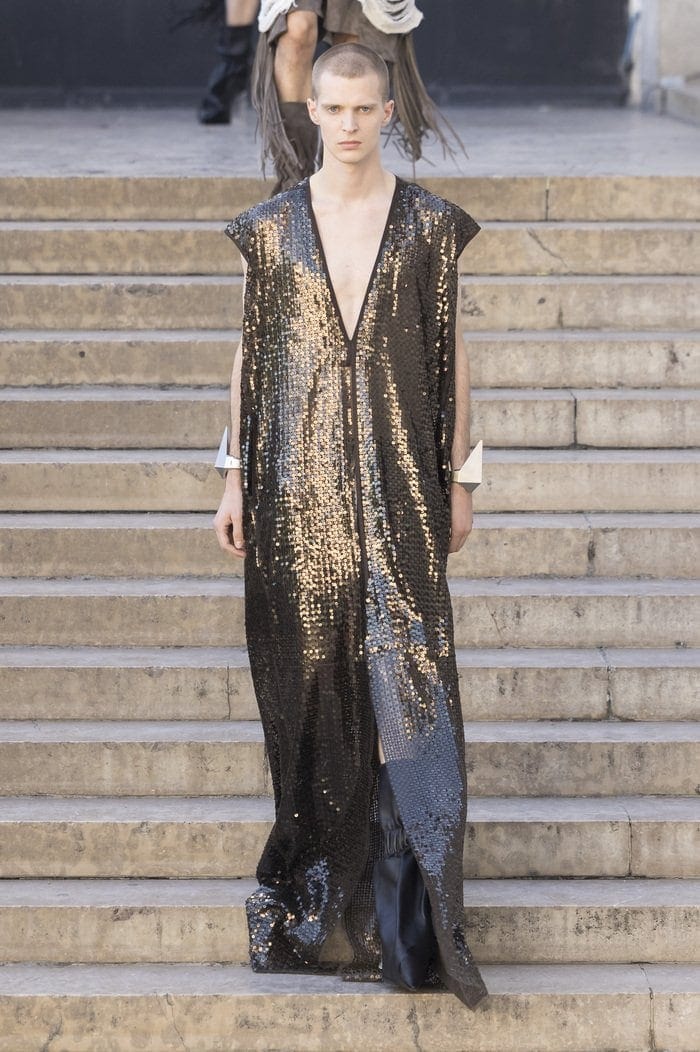
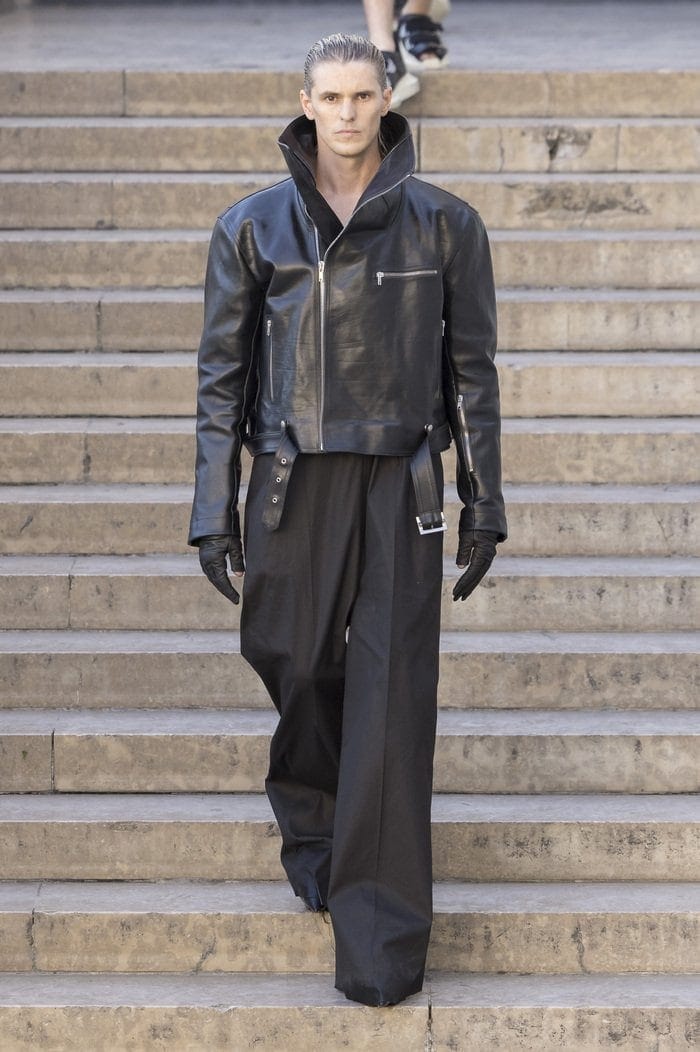
THE DIRECTION
THE WRAP UP
With Temple, Rick Owens confronts the myth of his own making—not to dismantle it, but to reframe it. In place of his signature spectacle, he offers memory, materiality, and measured rebellion. The result is a collection that lingers not in its loudness, but in its quiet courage: the courage to pare back, to reflect, and to resist the urge to explain.
It’s tempting to view the collection as a soft landing—a designer winding down. But Temple is more charged than that. It’s a stake in the ground, a whispered challenge to a culture that moves too fast to feel.
Owens may be looking back, but the gesture is anything but nostalgic. It’s strategic, elegiac, and quietly radical—a call to remember what matters, and to forget the noise.
